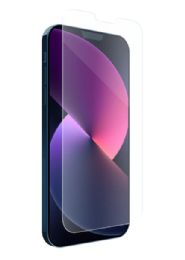




.webp&newheight=260&quality=80)





What is Low Vision?
Low vision is a visual impairment that is not correctable through glasses, contact lenses, pharmaceuticals, or surgery. While vision can deteriorate with age, significant vision loss is not a normal part of aging. It is often indicated by partial sight, such as blind spots, blurred vision, or tunnel vision. Of Americans age 40 and over, approximately 1 in 28 have low vision.
Low vision disorders can significantly impact a person’s well-being, independence, and quality of life. It can make everyday activities seem impossible, including reading, driving, cooking, getting dressed, or watching TV. Low vision disorders are often accompanied by other health dangers, such as mental health issues and an increased risk of falling.
As the incidence of adult vision impairment continues to increase, prevention is an important concern. Regular exams with an eye care provider can help diagnose these disorders when they are the most treatable. Also, providers can suggest devices and tools to help maintain or regain independence. Some of those devices are magnifiers, talking book players, and telescopic eyewear. If left untreated, eye disorders can result in blindness.
What are Low Vision Aids?
Low vision aids are tools that help those with vision loss maximize their remaining vision. These tools fall into three broad categories, which are optical devices, electronic devices, and non-optical devices.
Someone who is visually impaired needs a number of low vision devices to perform various activities of daily living. With the correct devices and training, many can perform routine activities and regain much of their independence.
The main principles behind low vision devices are to magnify objects, control glare, and enhance contrast. Most people use multiple aids because each is designed to serve a specific purpose. It is not unusual for an individual to have five or more low vision aids.
What are Optical Devices?
There are many types of magnification devices available, ranging from hand-held units to video magnification systems. The amount of magnification varies widely, from 20 to 80 times the current size.
Hand-held magnifiers help with reading menus, prices, ingredients, thermostats, or prescription bottles. They can also help with writing, doing crafts, and sewing. Hand-held magnifiers are available in a wide variety of designs and strength, and many are illuminated to give additional light. Stand magnifiers are helpful for reading magazines, books, or some writing tasks. Since they rest on the page and do not have to be held, they are ideal for those who are not strong enough to hold a handheld magnifier for any length of time, or for those with tremors.
Spectacle magnifiers are made for viewing near distances and are helpful for reading letters, books, menus, newspapers, playing cards or board games, and doing computer work. They enable both hands to be free, making them especially helpful. Some are made with extremely thin lenses so they will look like regular glasses. Telescopes can be used to see objects that are near, far away, and anywhere in between. They can help users to view TV, work on a computer, watch sporting events, and read street signs, shop signs, and house numbers. They are available in monocular for one eye, or binocular for both eyes.
Video magnification systems are electronic devices that use a scanner to modify the image of the object being viewed. It is then displayed on a video screen at a much higher level of magnification. The keyboard or computer mouse is then used to move the magnification screen across the materials. Text color, such as white letters on a black background, brightness, and contrast can be easily adjusted to make the text or object easier to see. Video magnifiers can provide many levels of magnification, from 1.5x to 50x. Portable video magnifiers are light and small enough to be taken to computer labs, school, or senior centers, besides being suitable to use at home.
What are Electronic Devices?
Electronic devices come in a variety of types. They range from reading machines to computer-assisted devices. Reading machines translate text into an audio file. The documents are placed in the scanner and the computer program reads the image on the screen. They can also create a sound file that can be played on an MP3 player. This method is a great option for textbooks and other nonfiction books.
Computer-assisted technologies include memory disks that allow the user to record and replay a short message, alarm clocks that announce the time, and sensors for cups and plates to indicate liquid level and temperature. All of these devices use electronics and computer chips to provide the required service. Other computer-enhanced low vision aids include modified sporting equipment, talking watches, running aids, and voice-activated key finders. Sometimes, those who use low vision aids also need mobility assistance. These can comprise voice-activated wheelchairs, talking canes, and modified chair lifts to provide the assistance that is required.
What are Non-Optical Devices?
Non-optical devices can include home management systems that act as a personal assistant. Upon the user’s arrival, the system automatically plays information about the weather, voice messages, house temperature, and alarm system status. The user can interact with the system by using audio controls for turning lights on and off, voice dialing, and recording reminders. Other non-optical devices are available for food preparation and cooking, so the individual can maintain even more independence in the kitchen and still stay safe.
What are the Causes of Low Vision?
Many things can cause low vision, such as macular degeneration, cataracts, diabetes, glaucoma, injury to the eye, strokes, traumatic brain injury, and birth defects. Aging is the number one risk factor. Other factors that increase the risk are ethnicity, gender, family history, exposure to UVA/UVB wavelengths, smoking, and dietary habits.
Age-related macular degeneration (AMD) is the leading cause of vision loss among Americans over the age of 65. Of all low vision cases, it accounts for nearly half of them. It is caused when the part of the eye that is responsible for sharp, straight on vision (the macula) breaks down and causes a loss of central vision. There are two types of AMD, wet and dry. Wet AMD is caused by the growth of abnormal blood vessels under the macula. With wet AMD, central vision loss occurs rapidly. In dry AMD, light-sensitive cells in the macula slowly break down, which leads to a gradual loss of central vision.
Some form of diabetic retinopathy affects more than 30% of Americans that are diagnosed with diabetes. It is directly related to high blood sugar (which damages blood vessels) and is a major cause of blindness. The damaged blood vessels affect the retina and can lead to its detachment.
Glaucoma is the second leading cause of blindness. Portions of vision are lost over time, usually with no symptoms or warning signs to vision deterioration. A decrease in peripheral vision, for many, is the first sign of glaucoma.
Cataracts appear as a clouding of the lens of the eye and cause vision to be blurry. Nutrition has been linked to helping delay or prevent the progression of cataracts.
Retinitis pigmentosa is a group of inherited diseases that affect the retina, resulting in progressive vision loss. This type often begins in childhood with poor night vision and it progresses over time.
For people living with low vision that can not be corrected with contact lenses or glasses, low vision aids and services are a great solution to make daily living more safe and accessible beyond just braille.